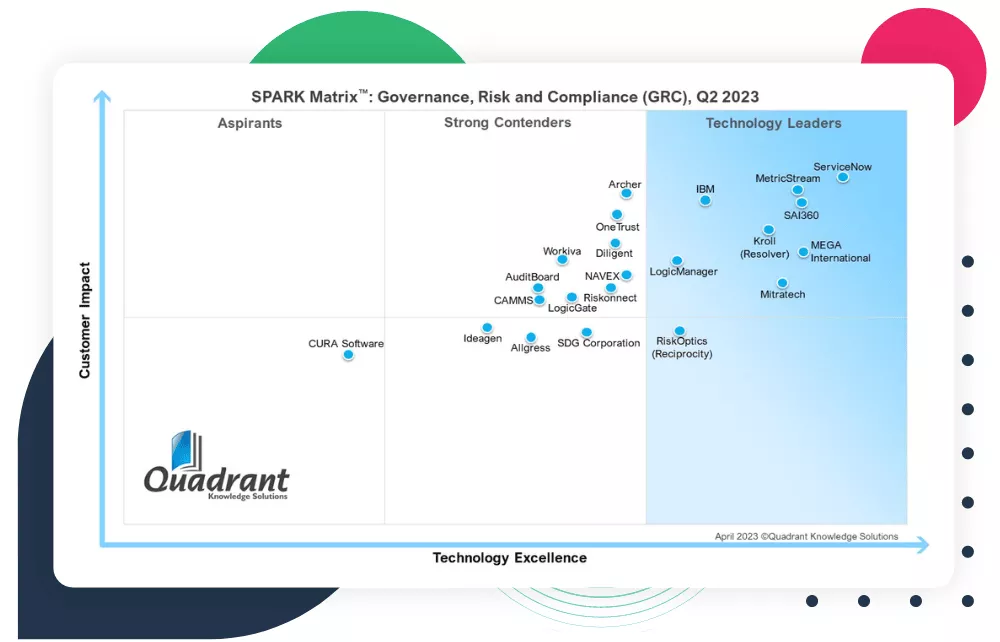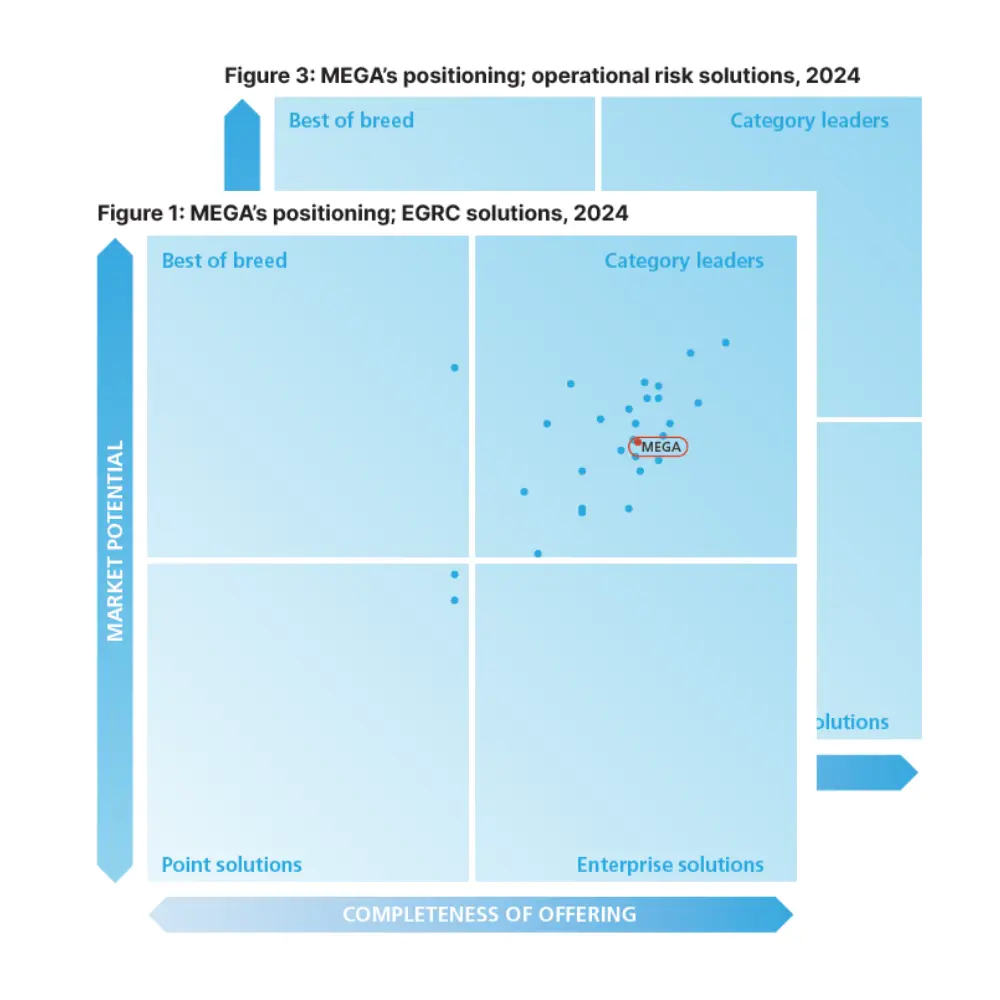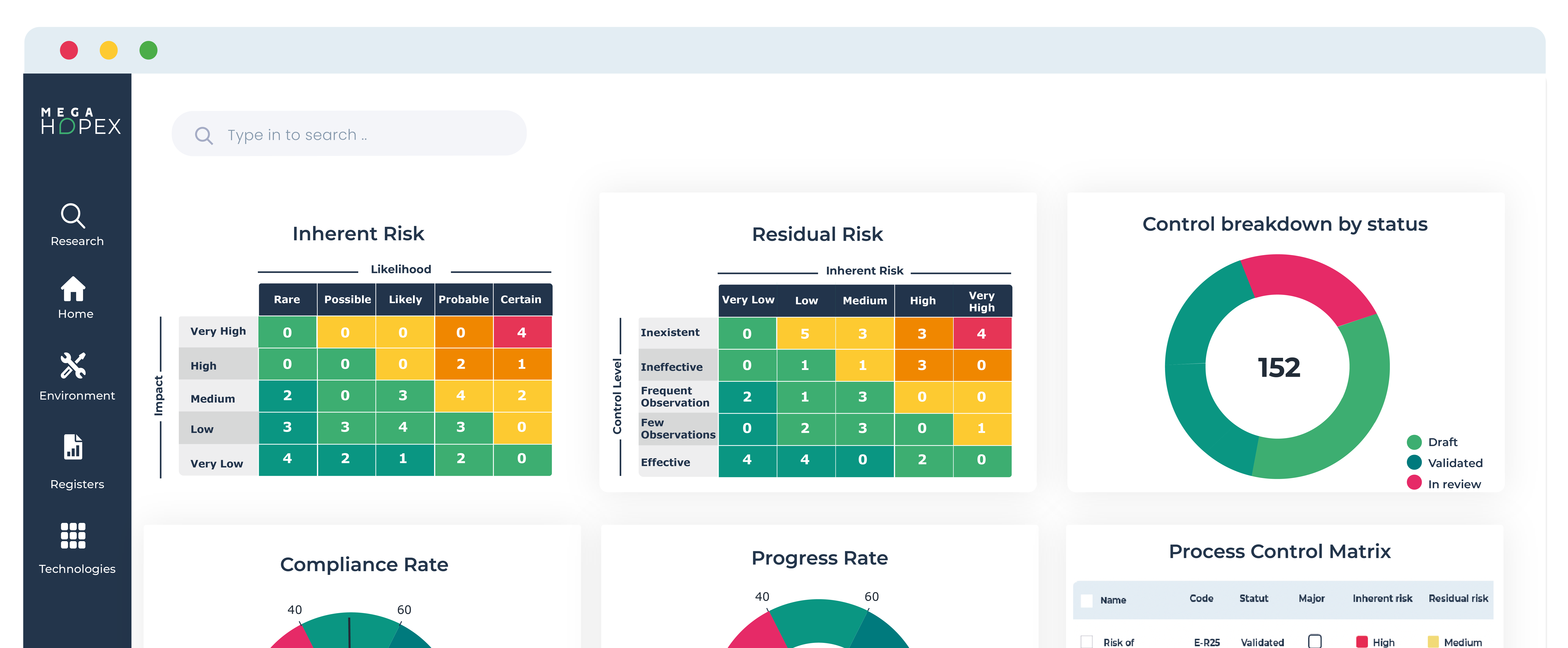
Business Resilience Explained: Building a Stronger Future for Your Company
Imagine your business as a ship navigating through an unpredictable ocean. Smooth sailing is never guaranteed; storms can hit without warning, and the waves of economic uncertainty can rock even the most solid vessels.
This is where business resilience comes into play—a concept that transforms your ship into a robust, adaptable cruiser capable of weathering any storm. Picture this: how confident would you feel if you knew your business could not only survive adversity but also thrive in its wake?
Let's discuss the concept of business resilience, its importance, and the strategies organizations can implement to build a resilient framework that not only ensures business continuity but also positions them to seize opportunities for growth in adverse situations.
What is Business Resilience and Why is it Important?
Business resilience refers to an organization’s capacity to absorb stress, adapt to changes, and recover critical functionality in the face of disruptions. It encompasses a range of strategies and actions that enable organizations to maintain operations and safeguard their stakeholders during crises.
Business leaders today must recognize that resilience is not merely a defensive posture; rather, it is a proactive approach that includes building robust systems, processes, and a culture that supports adaptability and innovation.
Developing business resiliency requires a comprehensive understanding of potential risks and the flexibility to manage them effectively.
The Importance of Business Continuity
Business continuity is a fundamental aspect of business resilience. It ensures that an organization can continue its operations with minimal disruption, even during crisis situations. A well-structured business continuity plan (BCP) addresses key areas such as supply chain management, operational processes, and customer service, ensuring that critical functions can be sustained or quickly restored.
The past COVID-19 pandemic has highlighted the necessity of having a solid continuity strategy, as organizations that had implemented effective BCPs were better positioned to navigate the challenges posed by sudden market shifts and interruptions in service delivery.
Differences Between Resilience and Business Continuity
While business resilience and business continuity are often used interchangeably, they are distinct concepts. Business continuity focuses on maintaining operations during a disruption and ensuring that essential functions continue without interruption. It is a reactive strategy, activated when a crisis occurs.
On the other hand, business resilience is a proactive approach, encompassing not only continuity planning but also risk management, crisis response, and the ability to adapt and evolve post-crisis. Resilience is about building an organization that can withstand shocks and continue to grow, rather than just survive.
Benefits of Building a More Resilient Organization
Building a resilient organization offers numerous benefits that extend beyond mere survival during a crisis. Firstly, organizations that prioritize resilience are often more agile and able to pivot quickly in response to changes in the market or operational challenges. This agility not only helps in managing disruptions but also allows businesses to capitalize on new opportunities that may arise during times of uncertainty.
Key Components of Business Resilience
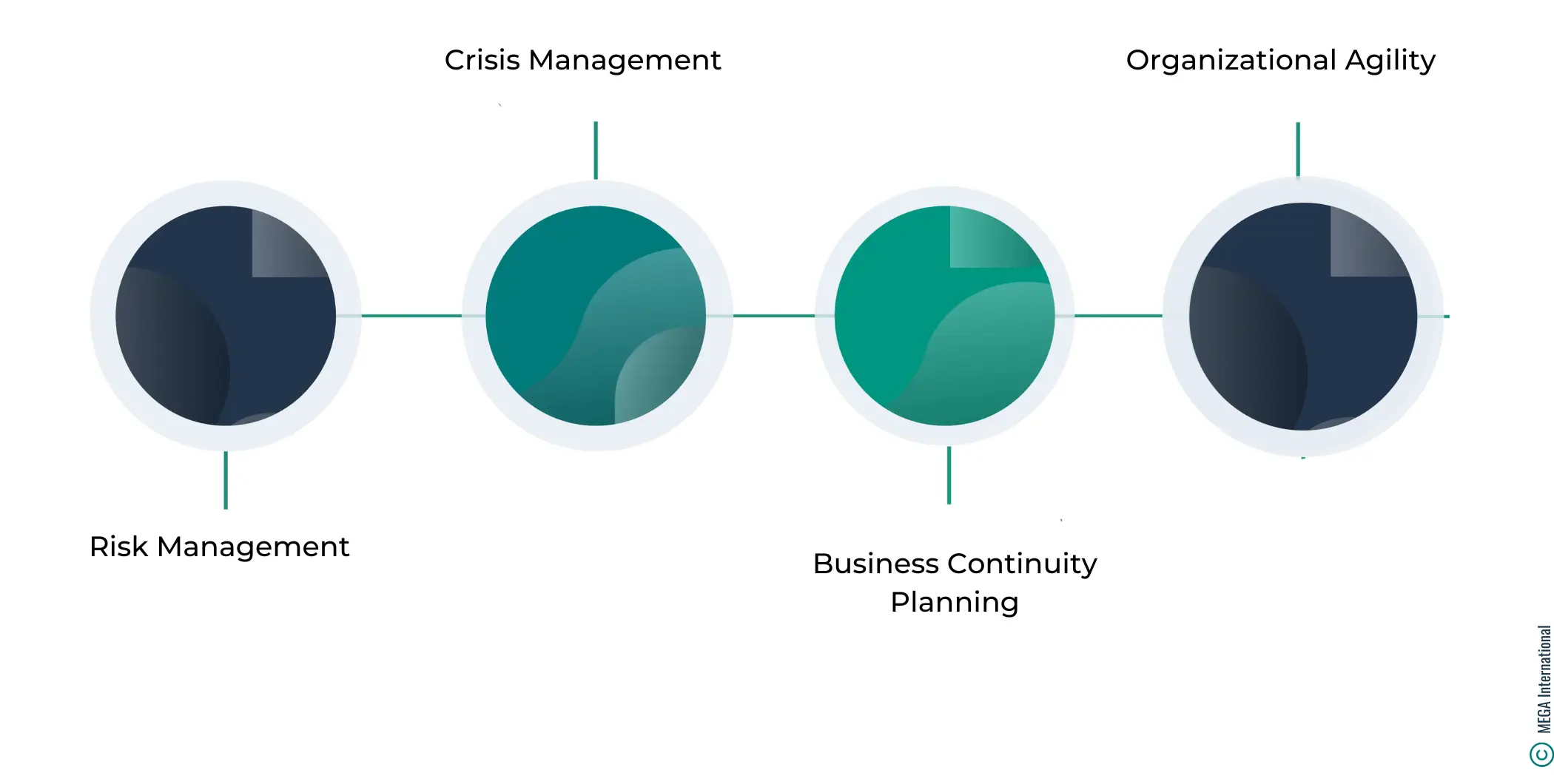
Risk Management
Risk management is a critical component of business resilience. It involves identifying potential risks that could disrupt business operations, assessing the likelihood and impact of these risks, and implementing strategies to mitigate them. Effective risk management allows businesses to anticipate challenges and prepare accordingly, reducing the severity of disruptions.
Crisis Management
Crisis management is the process of preparing for, responding to, and recovering from a crisis. It is an integral part of business resilience, ensuring that a company can effectively manage emergencies and minimize damage. A robust crisis management plan includes clear communication protocols, defined roles and responsibilities, and pre-determined actions for various types of crises.
Business Continuity Planning
Business continuity planning (BCP) is the practice of ensuring that critical business functions can continue during and after a disruption. A comprehensive BCP includes strategies for maintaining operations, protecting assets, and ensuring the safety of employees. It covers everything from IT recovery plans to alternative work arrangements and supply chain management.
Organizational Agility
Organizational agility refers to a company’s ability to quickly adapt to changes in the environment, whether due to external shocks or internal dynamics. Agile organizations are flexible, responsive, and capable of reconfiguring their operations to meet new challenges. This agility is crucial for business resilience, as it allows companies to pivot strategies, innovate under pressure, and seize new opportunities that arise during a crisis.
Business Continuity Planning
Importance of Business Continuity Plans
A well-crafted business continuity plan (BCP) is essential for ensuring that a business can continue operating during and after a disruption.
The importance of having a BCP cannot be overstated, as it serves as a roadmap for managing crises, protecting assets, and minimizing downtime. Without a BCP, businesses are at risk of severe operational and financial losses, damage to their reputation, and even total failure.
Steps to Develop a Business Continuity Plan
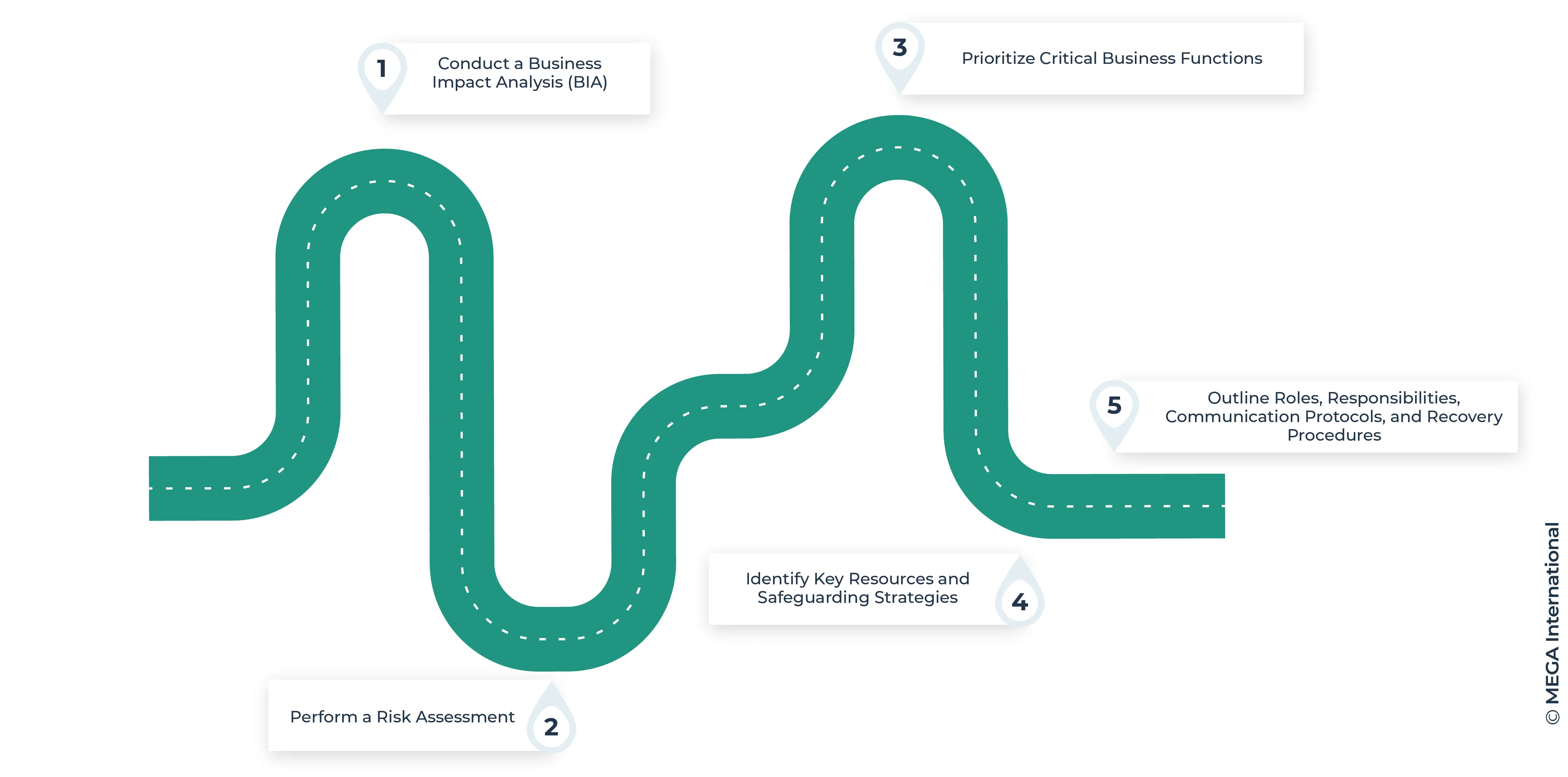
Developing a business continuity plan involves several key steps. First, businesses must conduct a thorough BIA (Business Impact Analysis) to evaluate the criticality of various business functions and processes, identifying which areas are most essential to the organization’s operations. This analysis helps to determine the potential consequences of a disruption and the time frame in which critical functions need to be restored.
After completing the BIA, businesses should then carry out a comprehensive risk assessment to identify potential threats and vulnerabilities. This involves evaluating the likelihood and impact of various risks, such as natural disasters, cyber-attacks, equipment failures, or supply chain disruptions, and determining the organization's current level of preparedness to manage these risks.
Next, they should prioritize critical business functions and determine how these functions can be maintained during a disruption.
This includes identifying key resources, such as personnel, technology, and suppliers, and developing strategies for safeguarding these resources. The plan should also outline clear roles and responsibilities, communication protocols, and recovery procedures.
Testing and Updating Your Plan
A business continuity plan is only effective if it is regularly tested and updated. Businesses should conduct regular drills and simulations to test their plan's effectiveness and identify any weaknesses. Additionally, the plan should be reviewed and updated periodically to account for changes in the business environment, such as new technologies, regulations, or emerging threats.
Risk Management for Business Resilience
Understanding business risks is essential for building resilience. Businesses face a wide range of risks, including operational, financial, legal, and reputational risks. Each type of risk requires a different approach to management, and businesses must be able to identify, assess, and prioritize these risks.
Risk Assessment Techniques
Risk assessment techniques are tools used to evaluate the potential impact of identified risks. Common techniques include qualitative risk assessments, which involve evaluating risks based on their likelihood and impact, and quantitative risk assessments, which use data and statistical models to estimate the potential financial impact of risks.
Mitigating Risks to Enhance Resilience
Mitigating risks is a key component of business resilience. Once risks have been identified and assessed, businesses must develop strategies to reduce their impact. This may involve implementing controls, such as backup systems, insurance policies, or diversification of suppliers.
Technology's Role in Business Resilience
IT resilience is a critical component of business resilience. IT resilience refers to the ability of an organization's technology systems to withstand and recover from disruptions. This includes everything from cyberattacks and data breaches to hardware failures and software glitches.
Cybersecurity as a Pillar of Resilience
Cybersecurity is a critical pillar of business resilience, especially in today's digital age, where the majority of businesses are heavily dependent on technology.
As cyber threats continue to evolve, businesses must invest in comprehensive cybersecurity strategies to protect their data, systems, and networks.
This includes implementing firewalls, encryption, multi-factor authentication, and employee training programs. A strong cybersecurity posture not only protects against attacks but also ensures that the business can quickly recover in the event of a breach.
READ: Think Cybersecurity Compliance is Boring? Think Again!
Leveraging Technology for Crisis Management
Technology can be a powerful ally for organizations in helping them manage crises quickly and effectively. With a plethora of solutions on the market, ranging from crisis communication software to monitoring systems, organizations can now detect and respond to crises in real-time.
The pervasive use of cloud solutions and remote work technologies also plays a key role in ensuring that business continues even if physical locations are compromised.
However, there is a downside: those solutions carry their own set of risks and can be a victim of disruptions.. Therefore, careful arbitrage in their use is required to avoid adding a crisis on top of an existing one.
Innovation and Business Resilience
How Innovation Drives Resilience
Innovation is a powerful driver of business resilience. By continuously seeking new ideas, products, and processes, businesses can stay ahead of the competition and adapt to changing market conditions.
Innovation also enables businesses to respond more effectively to disruptions, whether by developing new solutions to emerging challenges or improving existing operations to enhance efficiency and flexibility.
Encouraging a Culture of Innovation
Encouraging a culture of innovation involves creating an environment where creativity is valued, experimentation is encouraged, and failure is seen as a stepping stone to success. This can be achieved by providing employees with the resources and freedom to explore new ideas, offering incentives for innovative thinking, and fostering a collaborative work environment where diverse perspectives are welcomed.
Case Studies of Innovative Resilience
Several companies have demonstrated how innovation can drive resilience. For example, during the COVID-19 pandemic, companies like Zoom and Shopify quickly adapted to the changing business landscape by innovating their products and services.
Zoom scaled its infrastructure to handle a massive increase in users, while Shopify expanded its e-commerce platform to support small businesses transitioning to online sales. These innovations not only helped these companies survive the crisis but also positioned them for long-term success.
Legal Considerations in Business Resilience
Understanding legal risks is essential for business resilience. Legal risks can arise from various sources, including regulatory changes, contract disputes, and liability issues.
Businesses must be aware of the legal landscape in which they operate and take steps to mitigate these risks, such as by ensuring compliance with relevant laws and regulations, maintaining clear contracts, and implementing robust policies and procedures.
Regulatory Compliance in Crisis Situations
Regulatory compliance becomes even more critical during crisis situations. Businesses must ensure that they continue to meet their legal obligations, even in the face of disruptions. This may involve adapting operations to comply with new regulations, maintaining accurate records, and communicating with regulators as necessary. Failing to comply with legal requirements can result in fines, legal action, and damage to the business's reputation.
Legal Aspects
The legal aspects of business continuity include ensuring that contracts, insurance policies, and other legal documents are in place and up-to-date. Businesses should review their contracts to ensure that they include provisions for force majeure, which can protect against liability in the event of unforeseen disruptions. Additionally, businesses should ensure that their insurance coverage is adequate to cover potential losses during a crisis.
Monitoring and Measuring Resilience
Key Performance Indicators for Resilience
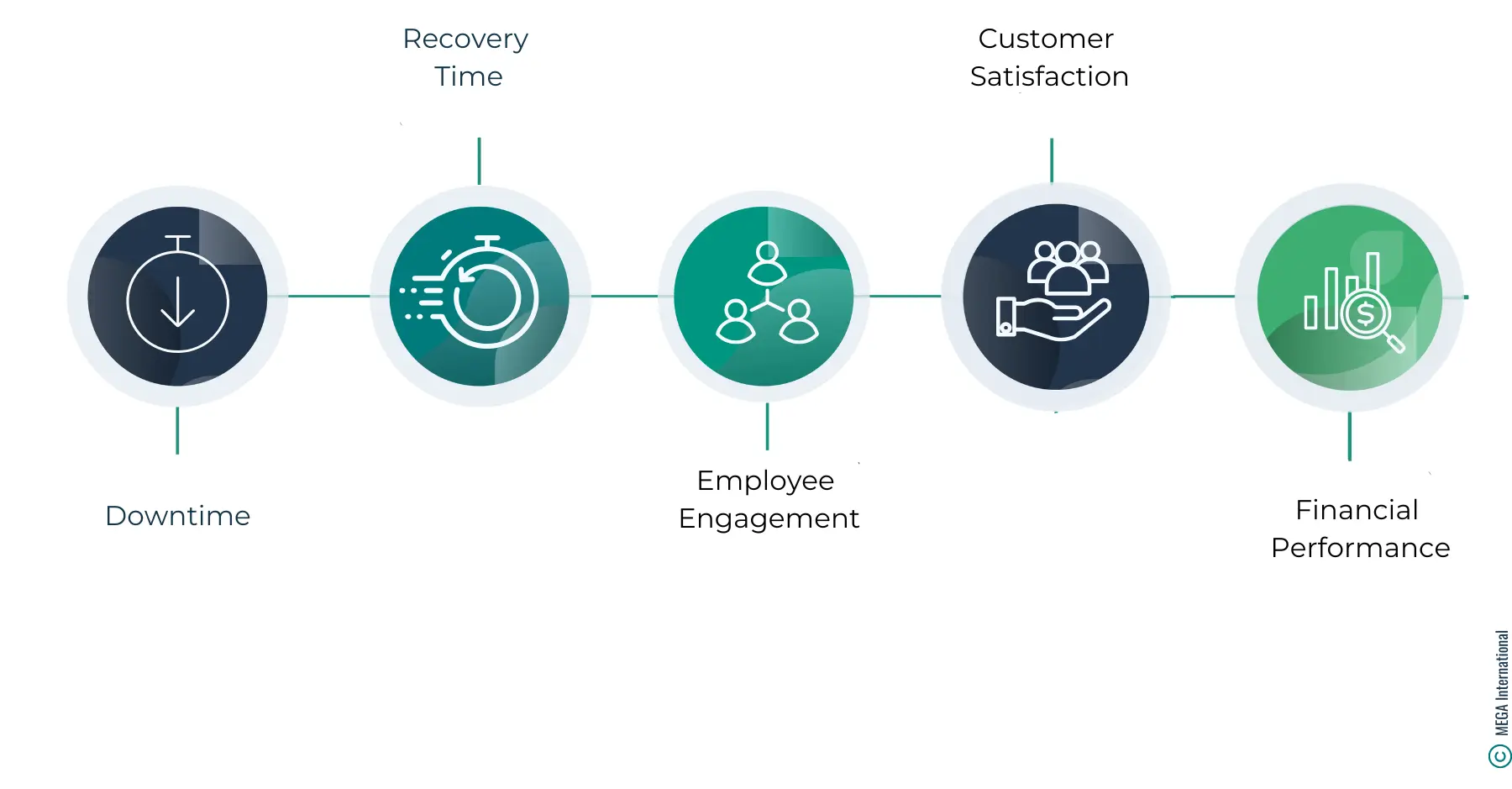
Monitoring and measuring resilience is essential for continuous improvement. Key performance indicators (KPIs) for resilience may include metrics such as downtime, recovery time, employee engagement, customer satisfaction, and financial performance.
Tools for Measuring Resilience
Various tools are available for measuring business resilience, including risk assessment software, business continuity management systems, and crisis management tools. These tools help businesses identify vulnerabilities, monitor risks in real time, and evaluate the effectiveness of their resilience strategies. Additionally, conducting regular audits and assessments can provide valuable insights into areas where improvements are needed.
Continuous Improvement in Resilience
Continuous improvement is a key principle of business resilience. Businesses should regularly review their resilience strategies, assess their performance, and make necessary adjustments to address new challenges and opportunities. This may involve updating risk assessments, refining crisis management plans, and investing in new technologies.
The Future of Business Resilience
Several trends are shaping the future of business resilience, including digital transformation, increased focus on sustainability, and the rise of remote work.
| As businesses continue to adopt new technologies, they must also adapt their resilience strategies to address the unique risks and opportunities presented by these trends. Additionally, the growing importance of environmental, social, and governance (ESG) factors is driving businesses to integrate sustainability into their resilience planning. |
The Role of AI in Business Resilience
Artificial intelligence (AI) is playing an increasingly important role in business resilience. AI-driven tools can help businesses predict and respond to risks more effectively, automate routine tasks, and improve decision-making. For example, AI can be used to analyze large volumes of data to identify potential threats, optimize supply chains, and enhance cybersecurity. As AI technology continues to advance, it will become an even more integral part of resilience strategies.

Preparing for Future Challenges
Preparing for future challenges requires businesses to stay informed about emerging risks, invest in new technologies, and continuously update their resilience strategies. This may involve developing scenario planning exercises, conducting regular risk assessments, and building a culture of resilience within the organization.
Summary
Focusing on key components such as risk management, crisis management, business continuity planning, and organizational agility, businesses can not only survive but thrive in the face of adversity. Effective leadership, supported by a resilient culture and innovative practices, plays a crucial role in driving resilience.
As we look to the future, it is clear that businesses must continue to evolve their resilience strategies, leveraging technology, sustainability, and continuous improvement to stay ahead of emerging risks and opportunities.
FAQs
Business resilience is the ability of an organization to absorb, recover, and adapt to unexpected disruptions, ensuring the continuity of operations and the achievement of long-term goals.
Leadership plays a crucial role in business resilience by guiding the organization through crises, making informed decisions under pressure, and fostering a culture of resilience and adaptability.
A business continuity plan includes risk assessment, critical function identification via Business Impact Analysis (BIA), resource allocation, communication protocols, and recovery procedures to ensure the continuation of operations during a disruption.
Technology enhances business resilience by providing tools for risk assessment, crisis management, and remote work, as well as by ensuring IT resilience through cybersecurity measures and disaster recovery plans.
Culture plays a significant role in organizational resilience by fostering an environment of innovation, collaboration, and adaptability, which enables the organization to navigate challenges and seize opportunities.
Small businesses can build resilience by diversifying revenue streams, investing in technology, developing strong relationships with customers and suppliers, and fostering a culture of adaptability and innovation.
Strengthen cyber resilience with an integrated solution
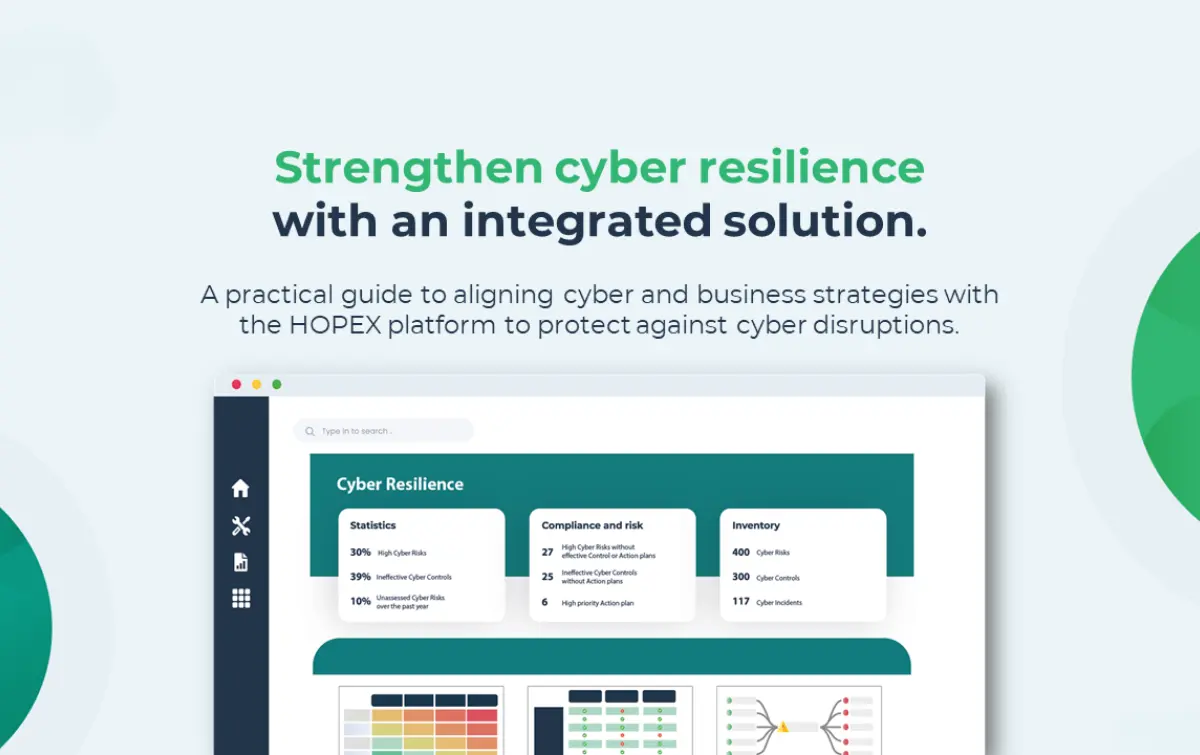
A five-step approach to strengthen your company's cyber resilience, offering key benefits:
- Protect organizations from cyber disruptions
- Comply with cyber resilience regulations
- Align cyber resilience management with business objectives
- Maintain a proactive cyber resilience stance
Governance, Risk and Compliance Related Content
Enhance operational resilience using integrated risk management
MEGA HOPEX for GRC
Request a demonstration of HOPEX for GRC, and see how you can have immediate value of your projects.





